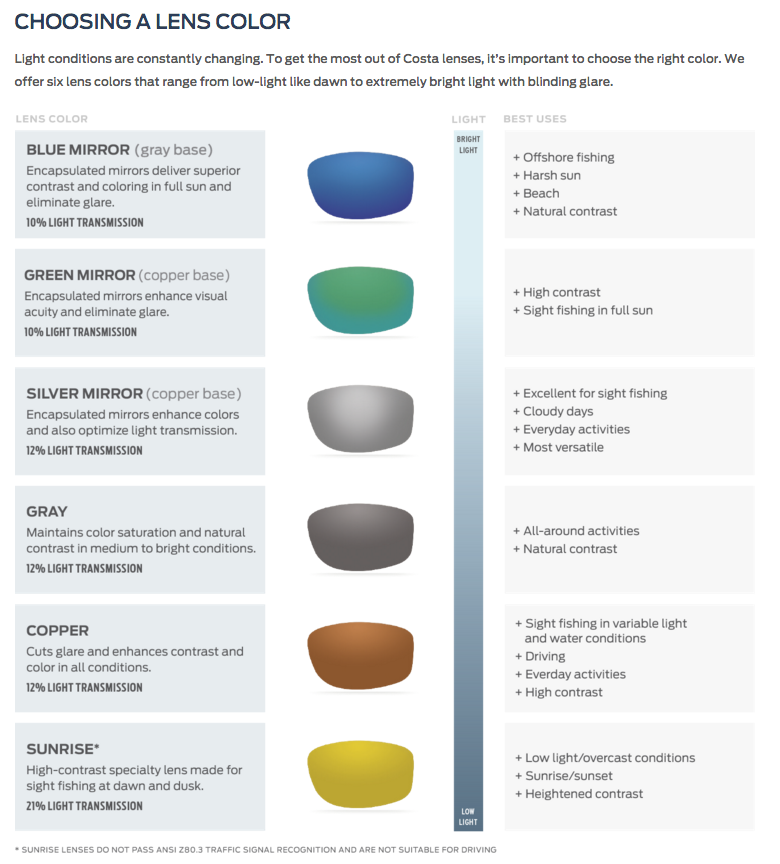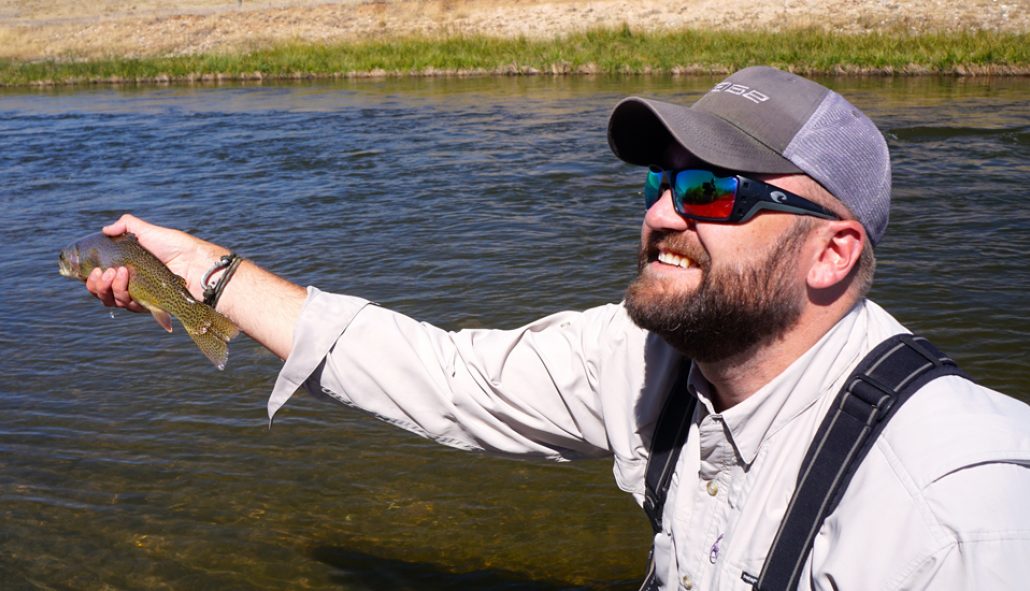When it comes to fly-fishing, I think most all of us would agree on a few of the items that are critical to an enjoyable day on the water- a fly rod and reel, a box or two of flies, some good fitting waders and boots, leader, tippet, nippers, etc, etc, etc.
One other item though that in my opinion is just as important as those above is a quality pair of polarized sunglasses. The term polarized sunglasses is a phrase that even the most novice of angler is likely to have heard and knows they need. However, just knowing you need a pair of polarized sunglasses isn't where the discussion ends.
When the decision is made to step up your sunglass game one of the most common questions I hear is "Which lens color should I get?" If you've never purchased sunglasses specifically for fishing, this can certainly be an intimdating topic.
The good news is though, understanding which lens color to use for the fishing situation you're going to encounter is really quite simple.
Here's how I like to determine the appropriate lens color in a few simple steps:
1. If you're going to be spending the majority of your time fishing rivers (where you'll be surrounded by a lot of greens/browns), get a copper colored lens.
2. If you're going to be spending the majority of your time on open bodies of water- lake, oceans, bays, etc- (where you'll be surrounded by a lot of blues) get a gray colored lens.
Pretty simple huh?
Now that you've decided whether a copper or gray lens makes the most sense, it's time to ask the next question- mirrored or non-mirrored lenses?
3. If you're primarily going to be fishing under variable light conditions (low light, bright light, cloudy days, etc), get a non-mirrored lens.
4. If you're primarily going to be fishing under bright sunny skies (particularly in a saltwater/bluewater situation) get a mirrored lens.
The reasoning behind why mirrored/non-mirrored lenses make sense in some situations over others is very simple as well. Mirroring on a sunglass lens blocks more light than a non-mirrored lens. This can be important on a bright, sunny day due to the mirroring's ability to reduce eye fatigue/strain. Conversely, wearing a pair of mirrored lenses during a cloudy day is going to make things appear darker than a non-mirrored lens would under those same conditions. You can already probably understand why this would not be desirable, particularly in a sight-fishing situation.
Lastly, some of you may have noticed I didn't touch on the third color of lens you'll see many manufacturers offering these days which is amber (yellow) lenses. In simplest terms, amber lenses are a specialty lens designed to be used under extremely low-light conditions. As you might be able to guess, amber lenses are always non-mirrored.
You can probably already tell, if you really get serious about fishing- just like with fly rods- you're likely going to end up owning more than one pair. I currently operate with 3 pairs of sunglasses and have found this set up to cover all my bases. They are: 1. A pair of copper lenses that serve as my day-to-day trout fishing glasses. 2. A pair of green mirrored (with a copper base-see below) that I will use on extremely sunny days trout fishing (particularly with a bunch of snow on the ground which adds to the brighness) and in many saltwater flats fishing situations. 3. A pair of of blue mirror (gray base) that I use for any offshore/bluewater fishing, as well as in some saltwater flats fishing situations.
To further reiterate this discussion above, check out this graph below courtesy of Costa Del Mar.



